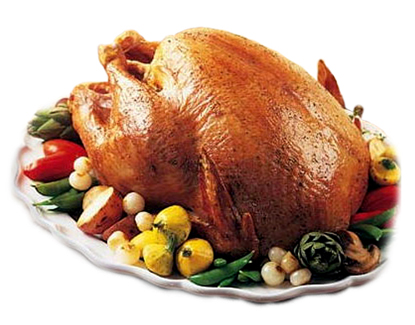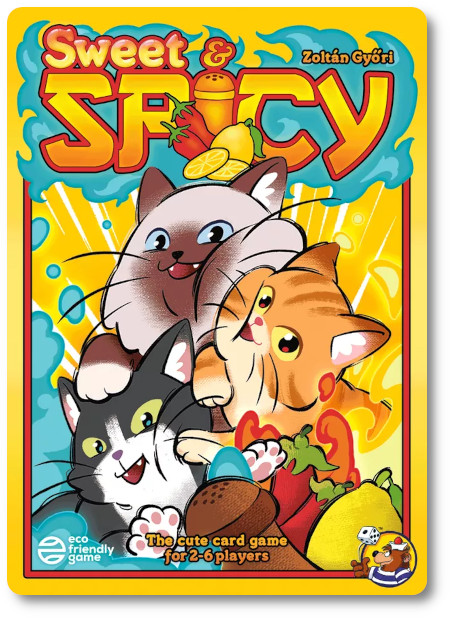 The Basics:
The Basics:
- For ages 8 and up
- For 2 – 6 players
- Approximatly 15 minutes to complete
Geek Skills:
- Active Listening & Communication
- Logical & Critical Decision Making
- Pattern/Color Matching
- Strategy & Tactics
- Risk vs. Reward
- Hand/Resource Management
- Self-confidence
- Bluffing and Misdirection
Learning Curve:
- Child – Easy
- Adult – Easy
Theme & Narrative:
- Bluff your way to victory in this game that rewards your dishonesty with cuteness
Endorsements:
- Child Geek approved!
- Parent Geek approved!
- Gamer Geek rejected!
Our culinary evolution continues to push the boundaries of what spices can be blended to create new and interesting tastes. Of great importance to chefs around the globe is to keep their meals interesting, if not altogether nutritious. One way to do so is to create an edible that is both sweet and spicy. It makes you go “yum” and then “ouch!” In this game, the sweet little kitties will be playing and making you laugh, but they have an agenda. Behind their cutness burns the fire of their competitive nature. Enjoy the fun, but don’t get scorched by the heat.
Sweet and Spicy, designed by Győri Zoltán Gábor and published by HeidelBÄR Games, is comprised of 110 cards. The cards are as thick and as durable as your standard playing card. Illustrations by Yoon Sung portray three adorable different kittens that serve to make the game all the more enjoyable for your players and families.
Note: Sweet and Spicy reimplement Spicy in almost all respects except for artwork, a different approach to using wild cards, and exceptionally subtle gameplay differences. This reimplementation of the game is intended for younger players and families.
Prepping the Kitties
Complete the following steps to set up a game.
First, separate the Spicy cards from the End Game card, Total Wild cards, and Trophy cards.
Second, shuffle the Spicy cards and deal five to each player, face-down. Players should look at their hand of cards but keep them hidden from their opponents. Place the remaining deck of cards face-down. This is the draw deck for the duration of the game.
Third, deal each player one Total Wild card. Players should add these to their hands immediately. Place the remaining Total Wild cards to one side of the draw deck.
Fourth, hold the Game End card next to the draw deck. Using the line guides on the End Game card, slide it into the draw deck as accurately as possible.
Fifth, place the Trophy cards next to the draw deck.
That’s it for game setup. Determine who will be the first player and begin.
Heating Things Up
Sweet and Spicy is played in turns with no set number of turns per game. On a player’s turn, they can only take two actions: “Play a Card” or “Pass”. Both actions are summarized here.
Play a Card
If this is the first round of gameplay, the first player will start what is referred to as the “spicy stack.” They must declare a number value of one, two, or three. However, the spicy trait may be one of the three traits. Cards are numbered one to 10. Spice traits include “chili,” “lemon,” and “pepper.”
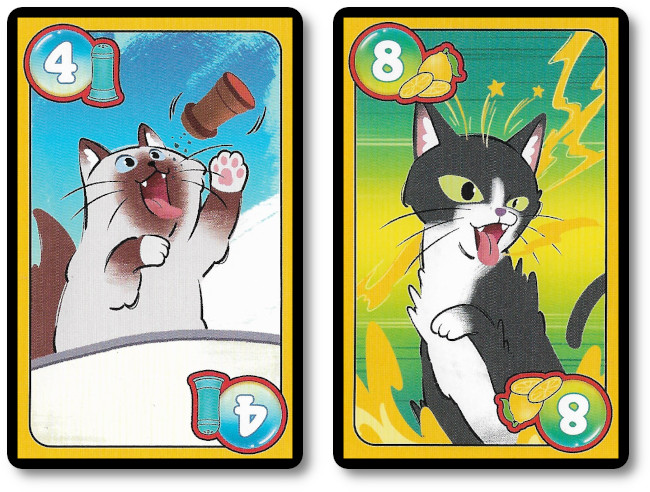
After the spicy stack has been started, all subsequent players can add one card by declaring its number and spice trait. For example, the player would place face-down their card and say, “Eight Pepper.”
When declaring a card, its number value must be higher than the previous one and match the spicy trait. For example, if the last player declared “Five Pepper,” the next player could declare any card value higher than five if it had the spicy Pepper trait.
If the 10-number value has been played, the next card declared and played to the spicy stack must have a number value of one, two, or three and still match the same spicy trait.
After the player declares and plays their card, their turn is over.
Pass
If the player doesn’t have the card or chooses not to play a card, they may declare “pass” and draw one card from the draw deck, adding it to their hand. The player’s turn is now over.
All the Spice!
The Total Wild cards represent all the numbers and all the spices. Powerful stuff! But this power has limitations:
- A player may never have more than one Total Wild card.
- A player must still declare a number value and spice trait necessary to keep the game going.
- Trophies cannot be won using the Total Wild card.
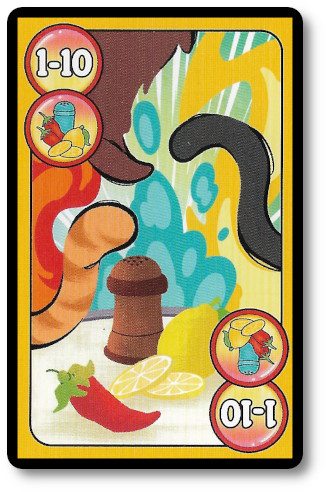
The game also has “Half-Spice” Wild Cards that can represent any number value or spicy trait, but not both.
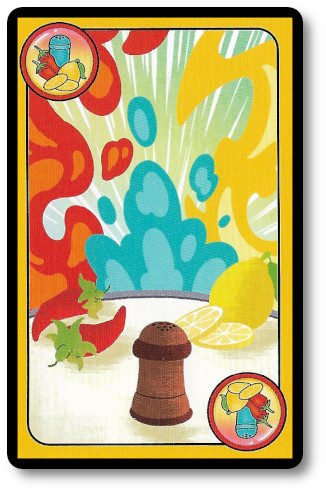
NOT SO FAST! I CHALLENGE!!!!
If you’ve noticed, I’ve stated the players must declare specific number values and spicy straits, but they always play their cards face-down. This leaves plenty of opportunity for players to bluff and flat-out lie about what cards they are placing on the spicy stack.
If any opponent believes the last player to have completed their turn with a played card that included either a false number value or spicy trait, they may announce that they challenge. The challenge is now resolved.
First, the player who initiated the challenge must state what they are challenging. This can be either the number or the spice, not both. Then, the top card on the spicy tray (the last played card) is flipped over and revealed to all. The truth is now out in the open! One player is the winner, and one player is the loser of the challenge.
- The challenge winner collects all the cards played to the spicy tray and places them in front of them for points later in the game.
- The loser of the challenge draws two Spicy cards and puts them in their hand. If the loser does not have any Total Wild cards, they may draw one instead of two cards from the draw deck.
Without question, a Total Wild card cannot be challenged due to its very nature of being everything all at once. If the player uses a Total Wind card as their last card, they won’t have to be concerned about challenges, nor do they collect a Trophy card. They must still draw five new cards, however.
A new spicy stack is now started.
Collecting Trophies
If a player plays their last card, they must announce it. The player’s last card can be challenged. Resolve the challenge as usual.
If the player is not challenged or wins the challenge, they now collect one Trophy card, adding to the cards they have collected so far. Then, the player draws five new cards to refill their hand.
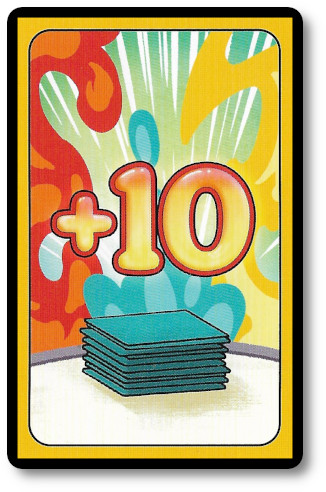
Winning the Game
The game continues as noted above until one player has collected two Trophy cards or all three Trophy cards have been collected. Final scoring is now completed.
Victory immediately goes to any player who has collected two Trophy cards—no need to count points.
Otherwise, each player scores 10 points per Trophy card, five points for Total Wild cards, and one point per Spicy card they have collected. They then subtract one point for every Spicy card and five points for every Total Wild card still in their hand. The resulting number value is the player’s total score. The player with the highest total score wins the game.
To learn more about Sweet and Spicy, visit the game’s webpage.
Final Word
 The Child Geeks, especially those familiar with Spicy, jumped right in and took control of their games without issue. They found the rules easy to follow, and the game was played at a speed at which they didn’t feel bored or overly exerted. According to one Child Geek, “I love kitty games, and I love this one, too. I like how the wild cards are so easy to use and you get to lie just a little, but not too much or you will get caught.” Another Child Geek reported, “I think the best thing other than the game is the cats. I like how each cat is different in each card, and if you put them in order, they tell a story.” When the last cat was fed and put to bed, the Child Geeks took a vote, and all agreed that Sweet and Spicy was all that and more.
The Child Geeks, especially those familiar with Spicy, jumped right in and took control of their games without issue. They found the rules easy to follow, and the game was played at a speed at which they didn’t feel bored or overly exerted. According to one Child Geek, “I love kitty games, and I love this one, too. I like how the wild cards are so easy to use and you get to lie just a little, but not too much or you will get caught.” Another Child Geek reported, “I think the best thing other than the game is the cats. I like how each cat is different in each card, and if you put them in order, they tell a story.” When the last cat was fed and put to bed, the Child Geeks took a vote, and all agreed that Sweet and Spicy was all that and more.
 The Parent Geeks also had no issues with the game but were unable to avoid comparing it to Spicy. According to one Parent Geek, “I think this is a solid game and is great for my family, kids, and any of my casual gamer friends. But I find it a bit less interesting than Spicy, mostly because I cannot change how the game is played with easy rule changes. I don’t think that’s bad, but if I had to choose this or Spicy, I’d drop the sweet and stay with the heat!” Another Parent Geek stated, “A good game. A solid game. A card game I’d play again without hesitation. I find its rules to be easy to learn, even easier to teach, and the games to be fast and fun. A great game for the family.” When the final game was played and won, the Parent Geeks took their vote and agreed that Sweet and Spicy was a nice addition to their family gaming table.
The Parent Geeks also had no issues with the game but were unable to avoid comparing it to Spicy. According to one Parent Geek, “I think this is a solid game and is great for my family, kids, and any of my casual gamer friends. But I find it a bit less interesting than Spicy, mostly because I cannot change how the game is played with easy rule changes. I don’t think that’s bad, but if I had to choose this or Spicy, I’d drop the sweet and stay with the heat!” Another Parent Geek stated, “A good game. A solid game. A card game I’d play again without hesitation. I find its rules to be easy to learn, even easier to teach, and the games to be fast and fun. A great game for the family.” When the final game was played and won, the Parent Geeks took their vote and agreed that Sweet and Spicy was a nice addition to their family gaming table.
 The Gamer Geeks played the game. Like the Parent Geeks, they lamented that it could not transcend its original rule set to include different scoring and game-playing options available in Spicy. This, as it turned out, was a bit of a deal breaker for our gaming elitists. As one Gamer Geek put it, “I think the game is fine and great for families. It lacks depth and becomes rather stale after one game; as you know, the next will be the same. I think this is a game every family should play, but gamers like myself will avoid it.” Another Gamer Geek said, “A solid game, and I like how they changed some of the rules to make it easier for younger and more casual players to enjoy themselves at the table. As it turns out, this is exactly why I don’t think I want it at my table. By simplifying the game, they took out the fun for me.” The Gamer Geeks took their vote and decided to reject this game, feeling much more love for its more complicated cousin, Spicy.
The Gamer Geeks played the game. Like the Parent Geeks, they lamented that it could not transcend its original rule set to include different scoring and game-playing options available in Spicy. This, as it turned out, was a bit of a deal breaker for our gaming elitists. As one Gamer Geek put it, “I think the game is fine and great for families. It lacks depth and becomes rather stale after one game; as you know, the next will be the same. I think this is a game every family should play, but gamers like myself will avoid it.” Another Gamer Geek said, “A solid game, and I like how they changed some of the rules to make it easier for younger and more casual players to enjoy themselves at the table. As it turns out, this is exactly why I don’t think I want it at my table. By simplifying the game, they took out the fun for me.” The Gamer Geeks took their vote and decided to reject this game, feeling much more love for its more complicated cousin, Spicy.
 I have seen several game publishers and designers retool games to make them more “family friendly.” Many of them are successful, as well. My Little Scythe comes to mind, which takes all the grand and rather time-intensive effort to play Scythe and streamlines it for a younger and more casual audience, which worked great. I think the same can be said here for Sweet and Spicy, but I am not in the least bit surprised that the less complicated equivalent turned off individuals who enjoyed the more complex version. Makes total sense.
I have seen several game publishers and designers retool games to make them more “family friendly.” Many of them are successful, as well. My Little Scythe comes to mind, which takes all the grand and rather time-intensive effort to play Scythe and streamlines it for a younger and more casual audience, which worked great. I think the same can be said here for Sweet and Spicy, but I am not in the least bit surprised that the less complicated equivalent turned off individuals who enjoyed the more complex version. Makes total sense.
And sense it might make, but that shouldn’t prevent you from trying the game. Sweet and Spicy is solid and was found to be entertaining by all. Yes, the Gamer Geeks poo-pooed it, but they tend to gravitate towards more complicated and cutthroat games that leave less room for error. Sweet and Spicy is still competitive and requires players to be strategic and tactical in bluffing their way to victory. It just so happens, however, that the game is much more forgiving to the players.
Let me put it this way. If you play a game of Bowling at the local lane of your choice, the gutters will gobble up your ball faster than you can spit. If you put up some bumpers, the ball is guaranteed never to go into the gutter. Either way, you can always tell if a bowler is skilled or not based on how they approach the lane and roll their bowling ball. Pins will be struck either way, but a player dependent on the bumpers will never be able to compete with a player who feels comfortable with the wide-open gutters.
The same goes for Sweet and Spicy. It’s the “bumper version” of Spicy. It’s the same game in many respects, except for a few differences intended to make the game more comforting and forgiving. The fun never stops, just the way you approach the gameplay. If this sounds like a good approach, then do give this game a try. You’ll find the game enjoyable, regardless of whether you want something with a bit more heat or like to keep it sweet.
This game was given to Father Geek as a review copy. Father Geek was not paid, bribed, wined, dined, or threatened in vain hopes of influencing this review. Such is the statuesque and legendary integrity of Father Geek.

